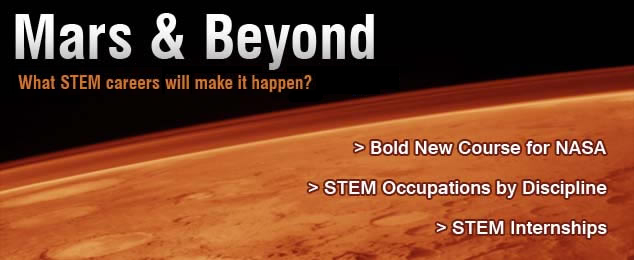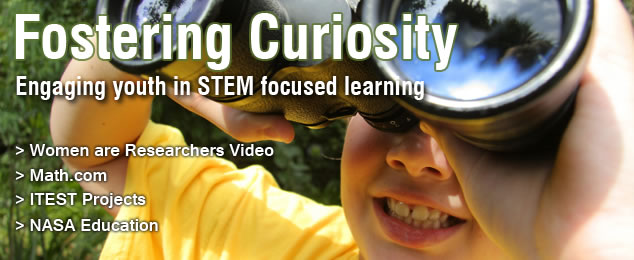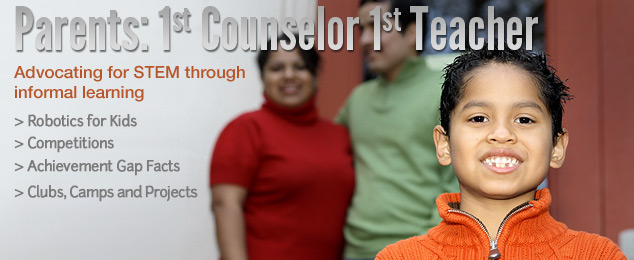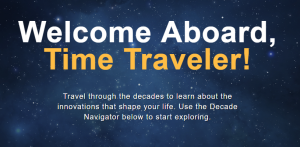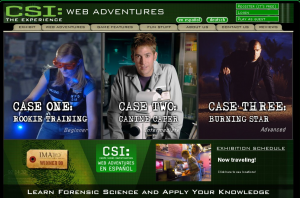In contrast to her time as an undergraduate student, Dr. Violeta Garcia was faced with feelings of discomfort and isolation as the only Latina woman in her STEM (science, technology, engineering, math) graduate program at the University of Northern Colorado. Because 37% of the college city’s population is Latino and 16% of the U.S. population is Latino, you would expect the university demographics to be similar. So why aren’t more Latina women getting involved in STEM? Dr. Garcia recognized that the problem of under-representation is multi-faceted and realized that the solution, was to work purposefully to increase representation of Latina women.
But why is representation (or lack thereof) of Latina women in STEM a problem? Well, when you were a child, what did you want to be when you grew up? Why did you want to pursue that path? If you were like many other kids, chances are you picked that job because there was someone in your life you looked up to and wanted to be like. Can you remember who that person was and why you identified with them? What did you have in common with them? While identity formation is an incredibly complex issue, one prominent trend has been noted in the research literature. Children begin to form a picture of who they are through their relationships and associations with others1. And as they compare themselves to peers and adults, inclusion or exclusion from sociological groups has a significant influence on the child’s development of self-identity.
You might be asking, what does it mean to be included or represented in a sociological group? It means that to see ourselves as part of a group (the STEM community, for example), we need to see people in that group that we can identify with – people who look like us and come from similar backgrounds. Role models are crucial to identity formation, even in adulthood. A 2013 study found that a majority of female medical students had difficulty seeing themselves as surgeons and that these notions of what they could or could not be were largely shaped by the scarcity of women in the field2. Without a female role model with whom they could identify, these women felt like outsiders that did not belong in a room full of men. Women are also consistently under-represented in STEM where they are half as likely to have a job in STEM as their male counterparts3. Because social context is imperative for identity formation, increased visibility of women in STEM is essential for closing the gender gap. Young girls need women scientists in both their local and broader sociological environments that they can identify with, look up to, and aspire to be.
But gender identity is only one part of the story. For minority women, under-representation is compounded by race. Latina women, for example, make up about 8% of the general U.S. population, but hold only 2% of science and engineering jobs4 making them half as likely as the broader female population to be in STEM. According to Dr. Garcia, under-representation creates a fear factor that pushes Latina girls away from STEM careers. When no one in the STEM community looks like you, it makes you feel like you don’t belong. And when no one in your family or the broader Latino community is doing something like science or engineering, it makes you think that you, as a person who is part of this community, can’t do it either.
One way to help children find an identity in the STEM community is to provide opportunities for them to conduct real scientific research and engineering projects. Exploration of different occupational identities (i.e. the line of work you could see yourself doing) is an important aspect of identity formation and maturation5. However, Dr. Garcia notes that unless we’re intentional from the start about representation, it doesn’t happen. One of the biggest solutions to under-representation in STEM is integration in education and schools, but few people actively work towards it and segregation continues to remain a large issue in school systems such as Greeley-Evans Schools District 6 and Denver Public Schools6.
These issues led her to propose an idea to the National Science Foundation (NSF) about exposing under-represented girls to biological and ecological research. NSF funded the project and helped Dr. Garcia to start El Espejo Girls’ Camp (now called Girls’ Science in Nature Camp) at the Poudre Learning Center as part of her PhD work in Greeley, CO. During the week-long program, middle school girls work together in small groups to do ecological research. Many summer programs such as this are expensive, commonly running $500-700 per week per child, and are only accessible to affluent communities. In contrast, Dr. Garcia found industry and community sponsors that could donate supplies and funds to make the program cheaper and more accessible. To be intentional about representing the Greeley-Evans School District’s nearly 60% Latino population7, she specifically reserved 60% of spots at the camp for Latina girls. The program not only helped girls identify as scientists and engineers, but also provided an important opportunity for girls from different ethnic backgrounds to work together on a common problem and acknowledge each other as scientists.
Dr. Garcia has also been involved with PBS’ SciGirls, an outreach TV series designed to engage elementary and middle school girls in collaborative STEM work for their communities. As part of the episode “Gallinas de Ciudad” (City Chickens), she mentored three Latina girls in sustainability as they worked together to re-engineer a chicken coop to provide fresh eggs to their local community. She loved watching how much these girls grew throughout their project and how their community came to recognize them as scientists too. By showing other girls in the community that they have scientists and engineers who look like them, it sends the message “they’re a SciGirl, I can be one too!”
The latest project that Dr. Garcia is working on is to create a permaculture learning lab in the Denver area. Permaculture (or “permanent agriculture”) uses a set of principles to design agricultural systems that use less energy and resources and reduces the impact on the environment. The learning lab, which is year-round, will help children and adults make science and sustainability part of their everyday lives by teaching them how to create their own permaculture gardens at home. When science is part of everyday life, it is something children can find an identity in and feel comfortable pursuing on their own.
Dr. Garcia has found part of her identity in helping others find theirs. The passion that she has for her work is palpable and the programs she has started and facilitated produce impactful benefits for the surrounding community. To learn more about her work, donate, or to get involved, you can contact her at y.violeta.garcia@gmail.com.
References:
- Raburu PA. The Self- Who Am I?: Children’s Identity and Development through Early Childhood Education. J Educ Soc Res. 2015;5(1):83-85. doi:10.5901/jesr.2015.v5n1p95.
- Hill E, Vaughan S. The only girl in the room: How paradigmatic trajectories deter female students from surgical careers. Med Educ. 2013;47(6):547-556. doi:10.1111/medu.12134.
- Noonan R. Women in STEM : 2017 Update.; 2017. http://www.esa.doc.gov/sites/default/files/women-in-stem-2017-update.pdf.
- National Science Foundation. Women, Minorities, and Persons with Disabilities in Science and Engineering.; 2015.
- Malanchuk O, Messersmith EE, Eccles JS. The ontogeny of career identities in adolescence. New Dir Child Adolesc Dev. 2010;2010(130):97-110. doi:10.1002/cd.284.
- Gottlieb A. Segregation of Latino Students Within Denver Schools an Ongoing Concern. http://www.rmpbs.org/blogs/news/segregation-of-latino-students-within-denver-schools-an-ongoing-concern/. Published 2016.
- District 6 Student Demographics. https://www.greeleyschools.org/Page/12700.
